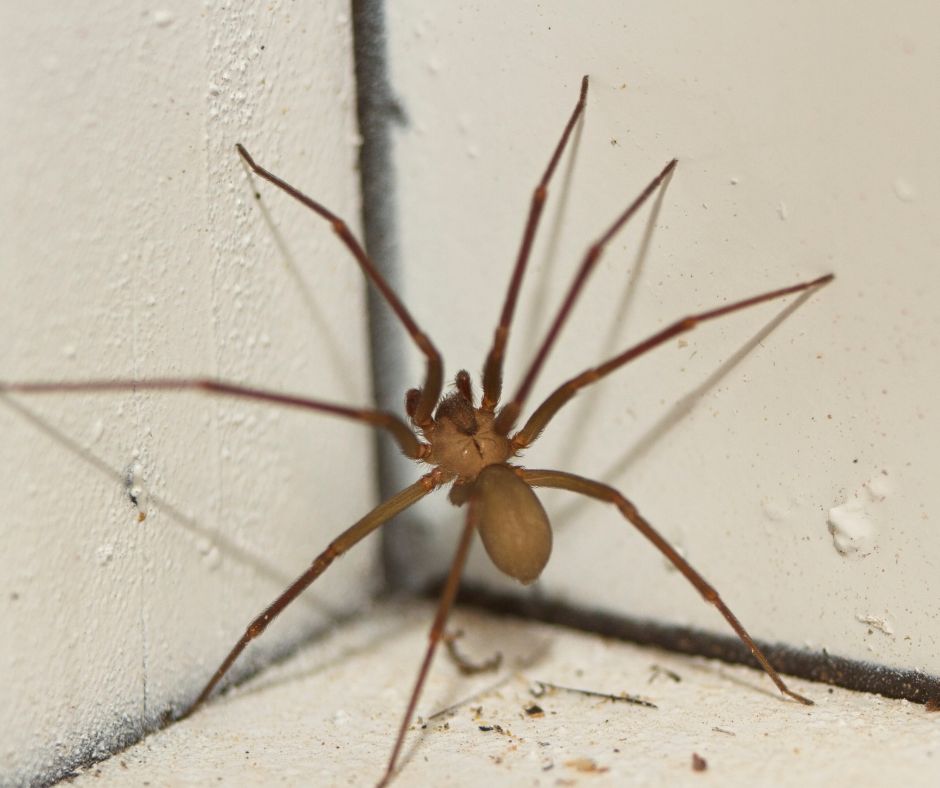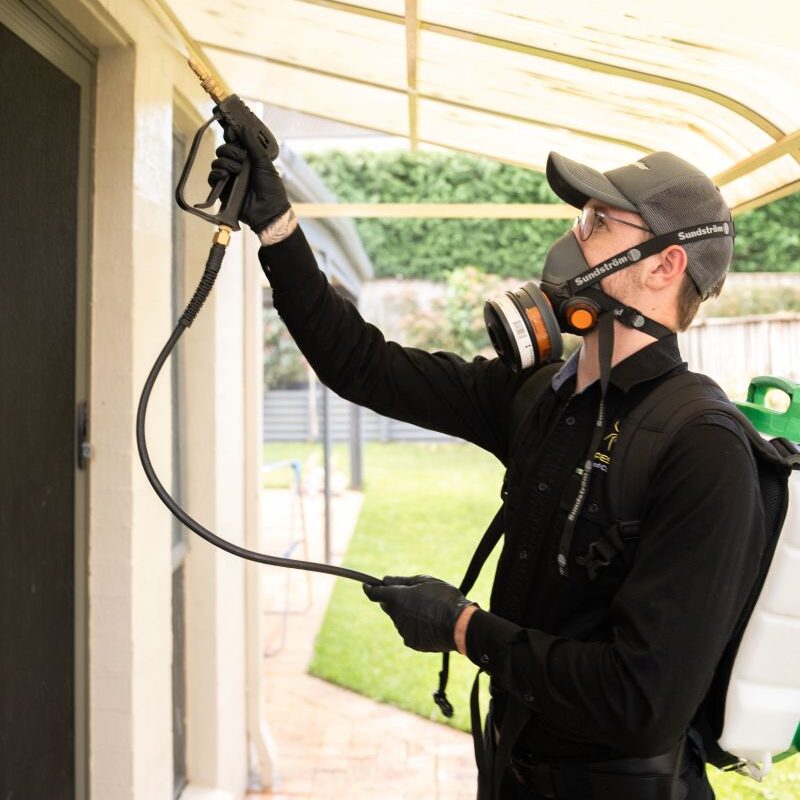When homeowners seek a pest control service, they often hope for a swift resolution, anticipating that every lingering spider will vanish overnight. However, the process of spider removal is far more complex than it may seem. Unlike other pests such as cockroaches or ants, spiders display unique behaviors and biological traits that pose significant challenges in the field of pest management. Understanding these nuances is crucial for effective control.
At So Pest Off, we often receive inquiries from homeowners who have undergone a general pest control treatment, only to find that certain spiders continue to linger in their homes. This article will delve into the specific challenges associated with spider control, set realistic expectations for treatment outcomes, and provide actionable strategies for maintaining a spider-free home over the long term.

Understand the Intricacies of Spider Control Compared to Other Common Household Pests
Spiders are often among the most misunderstood pests in Sydney homes. While insect sprays and physical barriers can effectively manage ants, cockroaches, and silverfish, spiders possess unique biological traits and behaviors that complicate their control and elimination. Recognizing these differences is essential for homeowners looking to achieve effective results.
1. Explore the Unique Anatomy of Spiders That Hinders Effective Treatment
Most spiders possess thick, hairy exoskeletons that serve as a protective barrier, making it challenging for insecticides to penetrate effectively. Unlike cockroaches and ants, spiders do not groom themselves frequently, which results in minimal ingestion of pesticides from treated surfaces. This biological characteristic makes them particularly resilient against conventional pest control strategies, necessitating a tailored approach for effective management.
2. Analyze Behavioral Patterns That Limit Spider Exposure to Treatments
Spiders are predatory hunters rather than scavengers, which significantly reduces their chances of coming into contact with treated surfaces. They prefer to hide in gaps, ceilings, garages, and gardens, spending minimal time on the floors or walls that have been treated. As a result, their limited exposure to pesticides often allows them to remain unaffected after the spray dries, complicating efforts for effective spider control. This necessitates a deeper understanding of their behavior for successful management.

Recognize Common Spider Species in Sydney and Their Individual Control Challenges
The warm climate and thriving suburbs of Sydney provide an ideal habitat for various spider species. Below, we detail some of the most commonly encountered types and the specific management challenges each presents:
Huntsman Spiders: Large and Fast with Unique Control Needs
Huntsman spiders are notable for their large size and quick movements, often found on walls and ceilings. Although they are generally non-venomous and harmless to humans, their swift actions and robust exoskeletons make them difficult to eliminate upon contact with pesticides. Understanding their behavior is crucial for developing effective control strategies.
Wolf Spiders: Ground-Dwelling Predators Requiring Specialized Treatments
These nocturnal hunters inhabit lawns and burrows, showcasing resistance to surface sprays because of their dense hair and nighttime activity. Effective control of wolf spiders often requires soil-targeted or barrier treatments to address their unique habitats effectively. Their behavior demands a strategic approach for successful management.
Funnel-Web Spiders: One of Australia’s Most Dangerous Species
Considered one of the most dangerous spiders in Australia, funnel-web spiders are burrowing creatures that rarely move across treated surfaces. Their behavior limits their exposure to standard sprays, necessitating specialized treatments from licensed professionals to ensure effective management. This highlights the importance of expert intervention in controlling such species.
Redback and Black House Spiders: Common Yet Manageable Pests
Often found in sheds, garages, and around outdoor furniture, these spiders prefer sheltered, dry environments. Their messy webs can serve as a key indicator of their presence. Fortunately, pest control methods are typically effective against these species, enabling homeowners to maintain comfortable living spaces while managing their spider populations.
Orb-Weaving and Branded Orb Spiders: Beneficial Garden Residents with Control Challenges
Harmless garden inhabitants, orb-weaving spiders create large, symmetrical webs in open areas. While they play a beneficial role in regulating insect populations, their presence can be unwelcome near doorways, decks, or play areas, prompting homeowners to seek effective management strategies to control their populations while preserving their ecological benefits.
Brown Trapdoor and Eastern Mouse Spiders: Burrowing Species with Control Difficulties
These burrowing species create camouflaged tunnels in gardens and lawns. They are less susceptible to sprays and often require soil-targeted or barrier treatments for effective management, presenting challenges for traditional pest control methods. Their unique habitats necessitate a specialized approach to ensure effective elimination.
White-Tailed Spiders: Common Indoor Pests with Painful Bites
Frequently found indoors, particularly in clothing, bedding, and bathrooms, white-tailed spiders can inflict painful bites, though they do not cause necrosis. As active hunters, they are constantly on the move, making them challenging to manage since sprays only affect them immediately after application. This requires a more comprehensive strategy for effective control.
Gain Insight into How Insect Sprays Function and Their Overall Effectiveness
The majority of insecticides used in Australian pest control are categorized as residual sprays, which maintain their activity on surfaces for weeks after application, thereby enhancing their effectiveness. Understanding the mechanics of these sprays is key to effective pest management.
The effectiveness of these treatments can be observed in three distinct stages:
- Contact: The pest walks over a treated surface.
- Transfer or Ingestion: The pest grooms itself, ingesting the chemical.
- Absorption: The pesticide penetrates the exoskeleton, impacting the nervous system.
This process is highly effective for pests such as cockroaches, ants, silverfish, and fleas. However, it is less effective for spiders, which do not engage in grooming behaviors or spend significant time on treated areas, posing considerable challenges for effective spider management.
Nonetheless, spider treatments offer various benefits, including:
- Creating barrier protection: any spider crossing treated areas risks exposure to the pesticide.
- Reducing their food supply: fewer insects result in fewer spiders in your home, creating a more controlled environment.
- Acting as a deterrent: most spiders tend to avoid areas with a chemical smell or feel, making these spaces less inviting for them.
Clarifying Common Misconceptions About Spider Pest Control
We have encountered numerous misconceptions regarding spider control, so let’s clarify the facts:
- “If I see a spider after a spray, it didn’t work.” This statement is misleading. Spiders are less impacted by dry residues. The treatment effectively works by eliminating their food sources and gradually reducing their population over time.
- “The spray should kill everything instantly.” Modern pest control chemicals are formulated to be safe for families and pets, which means they act more slowly for effective management.
- “If I still see one or two spiders, the job failed.” Encountering occasional spiders is normal. The primary goal is to prevent infestations rather than eliminate every single spider.
- “All spiders should die after a general pest control.” Ground-dwelling spiders, like Wolf or Funnel-web spiders, live in soil or burrows and require specialized treatments for successful management.
- “If I don’t see dead spiders, nothing happened.” Many spiders die in hidden locations or outside the premises. Success is best evaluated by fewer sightings over time, rather than visible corpses.
- “Pest control means my home will be spider-free forever.” No pest control method can permanently prevent spiders from entering your home. The focus should be on risk reduction and ongoing maintenance, rather than expecting a one-time miracle solution.

Adopting Proactive Strategies to Prevent Spider Infestations in Your Home
Pest control is just one element of the solution; continuous maintenance and proactive prevention are vital for effectively reducing spider populations in your living space.
Here are our experts’ recommendations for maintaining a spider-free environment:
- Schedule regular treatments every six months to ensure the chemical barriers remain effective and continue safeguarding your home.
- Seal entry points by closing gaps around windows, vents, and under doors to prevent spiders from entering your space.
- Minimize outdoor lighting, as lights attract insects, which in turn draw spiders to your property.
- Declutter both indoors and outdoors; spiders favor quiet, undisturbed corners where they can thrive.
- Regularly sweep away webs to discourage new spiders from settling in and establishing themselves in your home.
If you notice an increase in spider activity between treatments, your technician may recommend a targeted spider flush or dusting treatment around exterior eaves and wall junctions to effectively address the issue.
Establishing Realistic Expectations for Spider Control Results
Managing spider populations is about control rather than immediate eradication. Once pesticide residues dry, spiders are significantly less affected than crawling insects. Nevertheless, with regular treatments and diligent property maintenance, you can substantially reduce spider numbers and prevent future infestations.
At So Pest Off, we utilize advanced pest management techniques combined with an extensive understanding of Sydney’s spider species to customize our approach to meet your specific needs.
Engage Professional Spider Control Services for Optimal Management in Your Sydney Home
If spiders are causing distress in your home or workplace, don’t hesitate to take action. So Pest Off offers safe and family-friendly spider pest control services throughout Sydney’s Hills District, North Shore, and Western Suburbs.
We will conduct a thorough inspection of your property, identify the specific spider species present, and implement the most effective treatment, ensuring your home remains protected long after our visit.
Contact So Pest Off today to schedule a comprehensive spider inspection and reclaim your peace of mind.
The Article: Spider Pest Control: Understanding the Challenges of Elimination first appeared on https://writebuff.com
The Article Spider Pest Control Challenges: Effective Elimination Strategies Was Found On https://limitsofstrategy.com
Leave a Reply